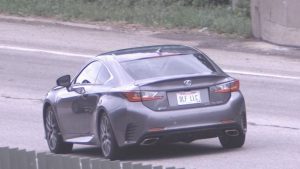 Technological advances in law enforcement must be reconciled with an individual’s right to due process of law. In DUI cases (called ‘OVI’ in Ohio), technology is used to determine the level of alcohol in a person’s breath. In other traffic cases, video cameras are used to determine speed limit violations. The fairness of the speed camera citation process was an abstract idea for me…until I received a citation. I learned that, if I wanted to appeal the citation, my appeal would be heard by a hearing officer from the city police department and not a judicial officer. The legality of this process was recently addressed by the Ohio Supreme Court and is now being challenged again.
Technological advances in law enforcement must be reconciled with an individual’s right to due process of law. In DUI cases (called ‘OVI’ in Ohio), technology is used to determine the level of alcohol in a person’s breath. In other traffic cases, video cameras are used to determine speed limit violations. The fairness of the speed camera citation process was an abstract idea for me…until I received a citation. I learned that, if I wanted to appeal the citation, my appeal would be heard by a hearing officer from the city police department and not a judicial officer. The legality of this process was recently addressed by the Ohio Supreme Court and is now being challenged again.
Ohio Supreme Court Decides Traffic Camera Case
The Ohio Supreme Court decided this controversy earlier this year. The city of Toledo, like many other Ohio municipalities, used traffic cameras to measure speed. A motorist caught speeding would receive a citation in the mail. The motorist had to pay a $120 penalty but could appeal the citation. The appeal, however, was heard by a city police hearing officer rather than a judge.
A motorist who received a citation sought a writ of prohibition from the Ohio Supreme Court to prohibit Toledo from using a law enforcement agent as a hearing officer. In State ex rel. Magsig v. Toledo, the Supreme Court concluded Ohio Revised Code section 1901.20 gives exclusive authority to municipal courts to adjudicate civil traffic law violations. Therefore, Toledo’s system for traffic camera violations was deemed unlawful.
The Court Will Soon Hear An Identical Case
Earlier this week, a motorist challenged an identical situation in the village of Brice, just outside Columbus. In Brice, the hearing officer for the traffic camera citation appeal is appointed by the village council. The same lawyer who challenged the Toledo system is representing the motorist in the Brice case. I expect the Brice system to experience the same fate as Toledo.
The Constitutional Perspective
Although the Ohio Supreme Court relied on Ohio statutory law to strike-down Toledo’s appeal procedure, the procedure also seems to have a Constitutional defect: it violates the principle regarding the separation of powers. The separation of power among the three branches acts as a system of checks and balances. The legislative branch enacts the law prohibiting speeding. The executive branch enforces the law by issuing the speeding citation. The judicial branch should interpret the law and apply it to the motorist in a process which is fair. With the appeal systems in Toledo and Brice, the executive branch hears the appeal. The separation of power is lacking because the executive branch is exercising judicial power. The problem is not the technology used to enforce the law: the problem is the process.
Technology In Ohio OVI Cases
The most common technology used to enforce OVI law in Ohio is the breath-testing machine. Defendants charged with OVI in Ohio are not permitted to challenge the general reliability of the breath-testing machine. This rule was announced in the 1984 case of State v. Vega and reinforced by subsequent cases. The reasoning behind the rule is the Ohio Department of Health (the executive branch) has determined the machines are reliable, so individuals are not permitted to argue otherwise.
There is hope the Vega rule will change. More recent cases have broadened the scope of what OVI defendants are permitted to challenge. As more judges and legislators become aware of the unfairness of the Vega rule, it is possible the rule will be changed legislatively or judicially.
It’s The Process, Not The Technology
Drunk driving is a danger which poses a risk of harm. It is appropriate to use technology like the breath-testing machine to combat this danger. It is inappropriate, however, to have a process which prohibits accused individuals from presenting evidence challenging the technology. Like the traffic cameras, the problem is not the use of technology to enforce the law: the problem is the unfair process for determining whether the law is violated.
 Columbus OVI/DUI Attorney Blog
Columbus OVI/DUI Attorney Blog

